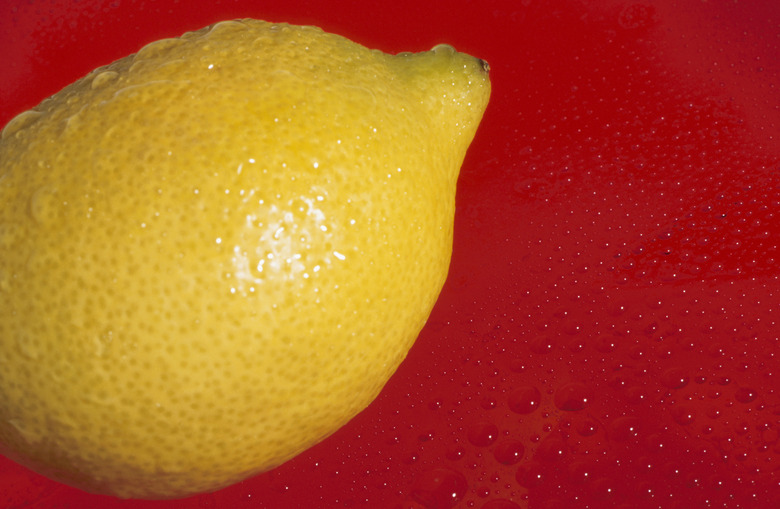How To Calculate The pH Of Lemon Juice
Chemicals can be loosely divided into two extremes: acids and bases. The pH scale measures exactly where a chemical falls between one of those two extremes. The scale measures 0 to 14; the lower the number, the more acidic a substance is. Water, for example, has a pH of 7 and is considered neutral (neither acid nor base). You can determine the pH of a chemical by using a pH indicator strip and checking the strip's color to a pH chart. For fun, measure the pH of lemon juice.
Step 1
Purchase some pH indicator strips. These strips are sold over the Internet; they can also be found at hardware stores selling pool and garden chemicals.
Step 2
Print or make your own pH color chart. (North Carolina State University has one available online; see References.)
Step 3
Dip the pH indicator strip into a glass of lemon juice. Swirl the indicator strip in the lemon juice for about a minute.
Step 4
Wait for the pH indicator strip to change color; do not let the strip dry completely.
Step 5
Compare the color of the pH indicator strip to your pH color chart. Lemon juice has a pH of 2.3; it is a very acidic substance. Checking your color chart, the pH strip should be a marigold yellow to a golden yellow.
Things Needed
- pH indicator strip
- pH color chart
- Lemon juice
Cite This Article
MLA
J.D., George Lawrence. "How To Calculate The pH Of Lemon Juice" sciencing.com, https://www.sciencing.com/calculate-ph-lemon-juice-5942486/. 24 April 2017.
APA
J.D., George Lawrence. (2017, April 24). How To Calculate The pH Of Lemon Juice. sciencing.com. Retrieved from https://www.sciencing.com/calculate-ph-lemon-juice-5942486/
Chicago
J.D., George Lawrence. How To Calculate The pH Of Lemon Juice last modified March 24, 2022. https://www.sciencing.com/calculate-ph-lemon-juice-5942486/
